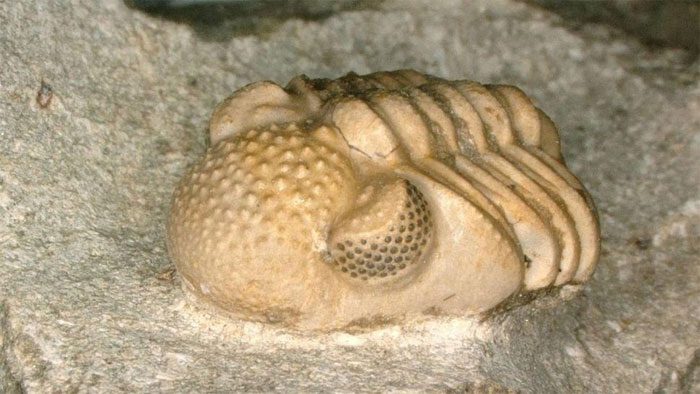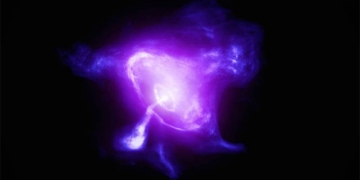The trilobite, an ancient creature that swam in the oceans millions of years ago, has gone extinct, but researchers have uncovered an unprecedented mystery about it through fossil records.
By examining X-ray images, researchers found that some species of trilobites, extinct arthropods related to horseshoe crabs, had “super compound eyes.”

Trilobite, an ancient creature with super compound eyes.
These eyes were complete with hundreds of lenses, each equipped with its own neural network to process and transmit signals, along with numerous visual nerves. This new study was published on September 30 in the journal Scientific Reports.
Modern arthropods, such as dragonflies and mantis shrimp, are also known for their powerful compound eyes, each equipped with a separate lens, similar to a sphere.
However, according to the new findings, the compound eyes of trilobites were much larger and more complex than their modern relatives. Each eye contained hundreds of lenses. With a width of nearly one millimeter, these primary lenses are thousands of times larger than those of typical arthropods.
The lead author of the study, Brigitte Schoenemann, a paleontologist at the University of Cologne, Germany, stated: “Each large eye is a super compound eye with up to 200 smaller eyes in each.”
The researchers used image enhancement techniques to examine dozens of archived photos, cross-referencing them with recent discoveries. During this process, they also decoded a long-standing scientific debate. They confirmed that a series of mysterious “fibers” seen in X-ray images from over 40 years ago were indeed bundles of visual nerves.
Nigel Hughes, a trilobite expert at the University of California, Riverside, remarked that this new study is quite convincing as the optical system serves a single function: vision.
This new research has unraveled a mystery that was raised nearly 50 years ago by professional X-ray doctor and amateur paleontologist Wilhelm Stürmer from Germany, who was ridiculed at the time. Other paleontologists believed that Stürmer had mistaken the optical fibers for neural tissue. However, this German X-ray doctor remained steadfast in his findings.





















































